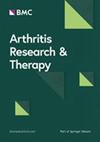Bulk RNA-seq conjoined with ScRNA-seq analysis reveals the molecular characteristics of nucleus pulposus cell ferroptosis in rat aging intervertebral discs
IF 4.6
2区 医学
Q1 Medicine
引用次数: 0
Abstract
Recently, several studies have reported that nucleus pulposus (NP) cell ferroptosis plays a key role in IDD. However, the characteristics and molecular mechanisms of cell subsets involved remain unclear. We aimed to define the key factors driving ferroptosis, and the characteristics of ferroptotic NP cells subsets during IDD. The accumulation of iron ions in NP tissues of rats caudal intervertebral discs (IVDs) was determined by Prussian blue staining. Fluorescent probe Undecanoyl Boron Dipyrromethene (C11-BODIPY) and lipid peroxidation product 4-Hydroxynonenal (4-HNE) staining were performed to assess lipid peroxidation level of NP cells. The differentially expressed genes in NP tissues with aging were overlapped with FerrDB database to screen ferroptosis driving genes associated with aging-related IDD. In addition, single cell sequencing (ScRNA-seq) was used to map the NP cells, and further identify ferroptotic NP cell subsets, as well as their crucial drivers. Finally, cluster analysis was performed to identify the marker genes of ferroptotic NP cells. Histological staining showed that, compared with 10 months old (10M-old) group, the accumulation of iron ions increased in NP tissues of 20 months old (20M-old) rats, and the level of lipid peroxidation was also enhanced. 15 ferroptosis driving factors related to IDD were selected by cross-enrichment. ScRNA-seq identified 14 subsets in NP tissue cells, among which the number and ratio of 5 subsets was reduced, and the intracellular ferroptosis related signaling pathways were significantly enriched, accompanied by enhanced cell lipid peroxidation. Notably, ranking the up-regulation fold of ferroptosis related genes, we found Atf3 was always present within TOP2 of these five cell subsets, suggests it is the key driving factor in NP cell ferroptosis. Finally, cluster cross-enrichment and fluorescence colocalization analysis revealed that Rps6 +/Cxcl1- was a common molecular feature among the 5 ferroptotic NP cell subsets. This study reveals that ATF3 is a key driver of NP cell ferroptosis during IDD, and Rps6 +/Cxcl1- is a common molecular feature of ferroptotic NP cell subsets. These findings provide evidence and theoretical support for subsequent targeted intervention of NP cell ferroptosis, as well as provide directions for preventing and delaying IDD.Bulk RNA-seq联合ScRNA-seq分析揭示了大鼠老龄椎间盘髓核细胞铁下垂的分子特征
近年来,一些研究报道髓核(NP)细胞铁下垂在IDD中起关键作用。然而,所涉及的细胞亚群的特征和分子机制尚不清楚。我们的目的是确定驱动铁下垂的关键因素,以及IDD期间铁下垂NP细胞亚群的特征。采用普鲁士蓝染色法测定大鼠尾盘NP组织中铁离子的积累。采用荧光探针十一烷酰二吡啶硼(C11-BODIPY)和脂质过氧化产物4-羟基壬烯醛(4-HNE)染色检测NP细胞脂质过氧化水平。将NP组织中与衰老相关的差异表达基因与FerrDB数据库进行重叠,筛选与衰老相关IDD相关的铁下垂驱动基因。此外,利用单细胞测序(ScRNA-seq)绘制NP细胞图谱,进一步鉴定嗜铁性NP细胞亚群及其关键驱动因素。最后通过聚类分析鉴定嗜铁性NP细胞的标记基因。组织学染色显示,与10月龄(10m龄)组相比,20月龄(20m龄)大鼠NP组织中铁离子的积累增加,脂质过氧化水平也增强。交叉富集法筛选了15个与IDD相关的铁下垂驱动因子。ScRNA-seq在NP组织细胞中鉴定出14个亚群,其中5个亚群的数量和比例降低,细胞内与铁死亡相关的信号通路显著富集,并伴有细胞脂质过氧化增强。值得注意的是,通过对铁下垂相关基因的上调折叠位排序,我们发现Atf3在这5个细胞亚群的TOP2中始终存在,提示它是NP细胞铁下垂的关键驱动因子。最后,簇交叉富集和荧光共定位分析显示,Rps6 +/Cxcl1-是5个嗜铁性NP细胞亚群的共同分子特征。本研究表明,ATF3是IDD期间NP细胞铁凋亡的关键驱动因素,Rps6 +/Cxcl1-是铁凋亡NP细胞亚群的共同分子特征。这些发现为后续针对性干预NP细胞铁下垂提供了证据和理论支持,并为预防和延缓IDD提供了指导。
本文章由计算机程序翻译,如有差异,请以英文原文为准。
求助全文
约1分钟内获得全文
求助全文
来源期刊

Arthritis Research & Therapy
RHEUMATOLOGY-
CiteScore
8.60
自引率
2.00%
发文量
261
审稿时长
14 weeks
期刊介绍:
Established in 1999, Arthritis Research and Therapy is an international, open access, peer-reviewed journal, publishing original articles in the area of musculoskeletal research and therapy as well as, reviews, commentaries and reports. A major focus of the journal is on the immunologic processes leading to inflammation, damage and repair as they relate to autoimmune rheumatic and musculoskeletal conditions, and which inform the translation of this knowledge into advances in clinical care. Original basic, translational and clinical research is considered for publication along with results of early and late phase therapeutic trials, especially as they pertain to the underpinning science that informs clinical observations in interventional studies.
 求助内容:
求助内容: 应助结果提醒方式:
应助结果提醒方式:


